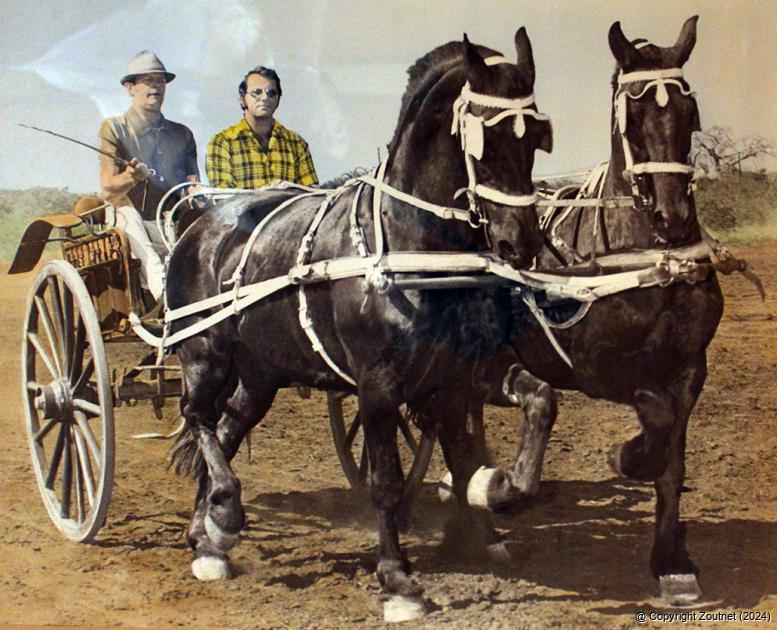

ADVERTISEMENT:

Members of the Louw family during the Messina Annual Show in 1976, with a horse-drawn cart. Photo: Danie Louw.
A time when one horse power was all you needed
As September is Heritage Month, the Zoutpansberger took a stroll down memory lane…
Way, way down memory lane, to a time when there were no vehicles to get one from point A to B, but something a little more modest. The horse-drawn cart was used in the years before the motorcar.
A Soutpansberger who preserved the knowledge of these fascinating carts up until recent years is Oom Danie Louw. He became well known in the region and was the go-to guy if one, wanted to hire a horse-drawn cart for a wedding or special event.
These days, however, he is retired and has put his various carriages in storage.
His family, originally from the Western Cape, moved to the Soutpansberg in the 1930s. As they settled in the area, they used to participate in annual shows in the region. Oom Danie basically grew up around horses and carriages, some with the most colourful nicknames such as Die Staatmaker. He even has a Cape Cart that was used to deliver fish and other wares to the market in the olden days.
While looking at Oom Danie’s collection, one cannot help but note the similarities that these carts have with the modern vehicle; albeit that they often had less horse power and sometimes as little as one horse power.
These boxes on wheels could also become a family vehicle, Oom Danie pointed out, and some even had a little child seat that flipped out from under the bunk. The carriages also had a horn in the form of a bell, which the driver could ring by pressing a button sunk into the floor of the carriage. “I’m not sure why they would have needed a bell during those days … it’s not as if there was a lot of traffic,” remarked Oom Danie. If the family had to travel quite a distance, some of the carriages had a roof installed in the form of a leather or cloth canopy.
These earlier modes of transport also required a lot of fine tuning beforehand to get the wheel balance just right. First the actual wheels of the carriage had to be kept clean. The wheel was made of wooden spokes that were held together by a curved circle of wood, covered by a thick band of metal cast around that curve. If the wood dries out, it cracks and then the driver would be stuck with a "flat".
The horses also had to be carefully shoed to ensure that they could pull their cart at full strength. Oom Danie explained that carriage horses made use of special shoes that are heavier, to encourage the horse to pick up his feet higher.
Then, of course, there was the steering bit, equivalent to today’s steering rod of a motor car. Depending on the horse - whether it had a fiery or calm personality - the driver would select a hard or soft bit to ensure the horse executed commands. A good rider and stable boy, however, would have worked together and known their horses’ temperament like the back of their hands. They would also have kept the horses in tip-top shape, much like one would take care of one's motorcar.
Nowadays, however, Oom Danie enjoys retirement and has handed over the reins to other family members who will hopefully restore the carriages to their former glory.
News - Date: 29 September 2016

Recent Articles
-

New Lukwarani leader may be blind, but has bright vision for his people
14 April 2024 By Elmon Tshikhudo -

Teach women to farm and they will change the world, says young farmer
14 April 2024 By Anton van Zyl -

-

Elim family fed-up with VDM's inability to fix sewer
13 April 2024 By Kaizer Nengovhela
Search for a story:

ADVERTISEMENT


Isabel Venter
Isabel joined the Zoutpansberger and Limpopo Mirror in 2009 as a reporter. She holds a BA Degree in Communication Sciences from the University of South Africa. Her beat is mainly crime and court reporting.
Email: [email protected]

ADVERTISEMENT:



